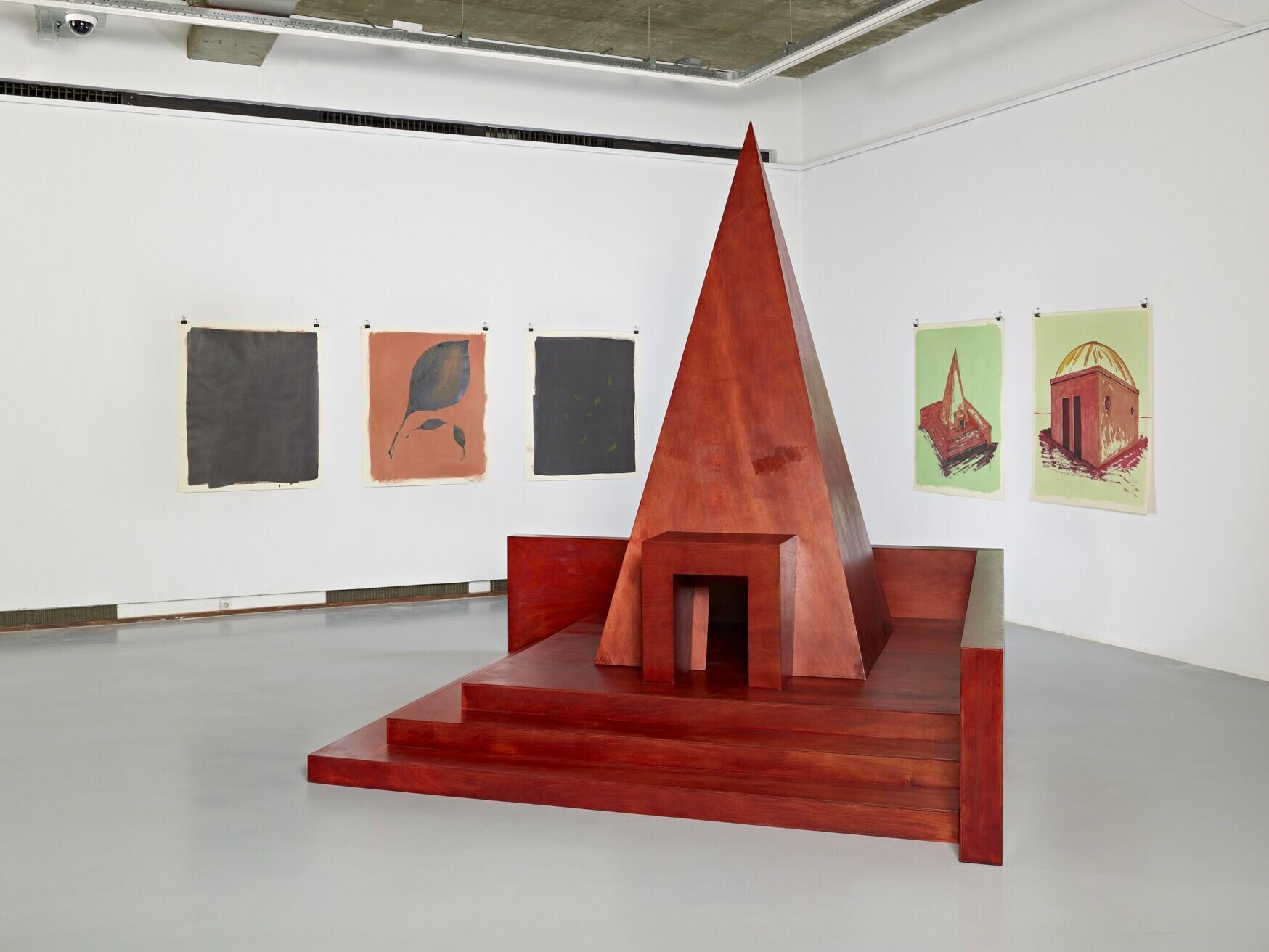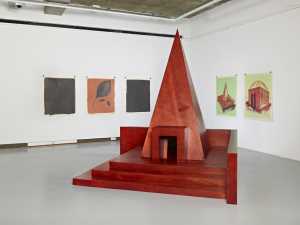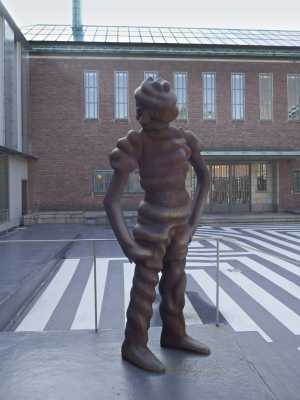The German artist Thomas Schütte is one of the most versatile contemporary sculptors. His work elicits a preference for material experiments and is full of references to pop culture, historical events and art history. But his central theme is the human condition: the confusing contradictions in ourselves and in the world around us. In sculptures that are by turns hilarious and earnest, Schütte questions our own constantly changing, physical and emotional states.
Schütte began his studies at the Kunstakademie Düsseldorf in 1973. At that time, Düsseldorf was one of the most vibrant contemporary art centres in Europe: it was a breeding ground for young artists and home to leading conceptual artist Joseph Beuys (1921-1986) and painter Gerhard Richter (1932), who was among Schütte’s teachers. Shortly after graduating in 1981, Schütte had his first solo exhibition at the Konrad Fischer Galerie, which exhibited established American artists such as Carl Andre (1935), Sol LeWitt (1928-2007) and Bruce Nauman (1941). In these early years, Schütte made minimalist architectural models that were not intended to be built. At the same time, he also made figurative sculptures, initially without success because the return to such a traditional art form was viewed as a strange step after decades of abstract and conceptual art. How could figurative sculpture still be relevant?
Schütte populated his architectural structures with miniature figures and found toy dolls, which provided a sense of scale but also a degree of absurdity. This need for a human element gradually led to the figure becoming the main element. From the end of the 1980s, Schütte made installations with small but expressive figurative sculptures. A key series was ‘United Enemies’ from 1993: figures with grim faces modelled in Fimo clay, wrapped in fabric and exhibited in pairs under a glass bell jar. The meaning of these enemies condemned to live with each other is not clear, but is open to the viewer’s interpretation.
Over the years, Schütte has built up a repertoire of motifs, forms and themes to which he constantly returns. Many of the miniature series from the 1990s returned in the following decade on a monumental scale, executed in different materials. Just as Schütte initially placed miniature figures in his relatively large architectural installations, he has also played with larger-than-life-size sculptures, in which the viewer becomes the toy doll. It is this shift in the viewing experience that preoccupies the artist. When does the transition from intimate to monumental take place and what do these ‘statues’ mean? Traditional statues often have a clear function: they commemorate an event, validate an ideal, or put someone on a pedestal. This narrative is lacking in Schütte’s sculptures.
The ‘Grosse Geister’ series also puts our assumptions to the test. The series consists of seventeen giant figures in various positions, executed in bronze, aluminium and cast iron. One of these giants has greeted visitors at the entrance to Museum Boijmans Van Beuningen for years: simultaneously friendly and monstrous, impressive in size but comical in appearance. The ambiguous title also raises questions: is he a ghostly apparition or a tribute to the human intellect?

Thomas Schütte
Oldenburg 1954



